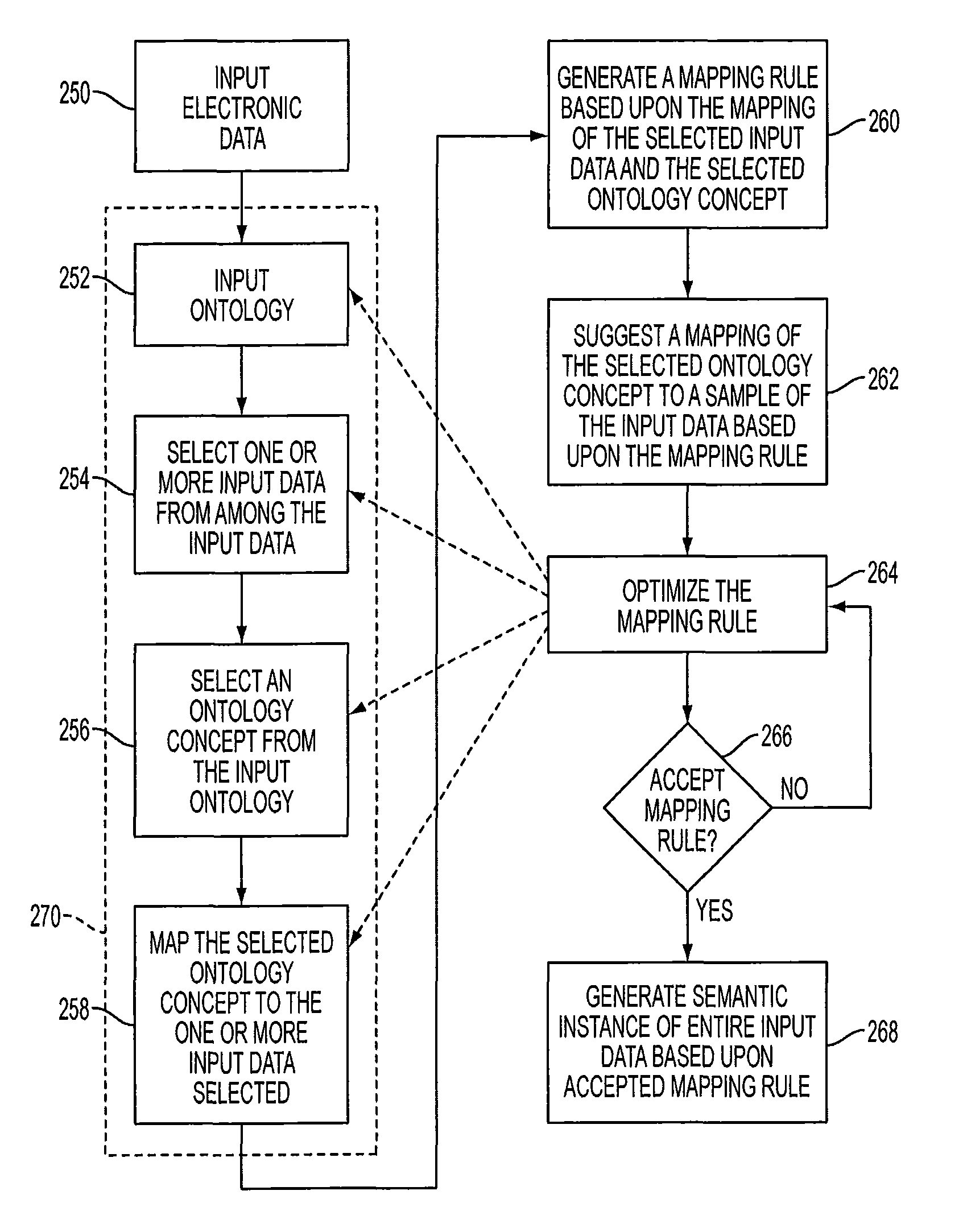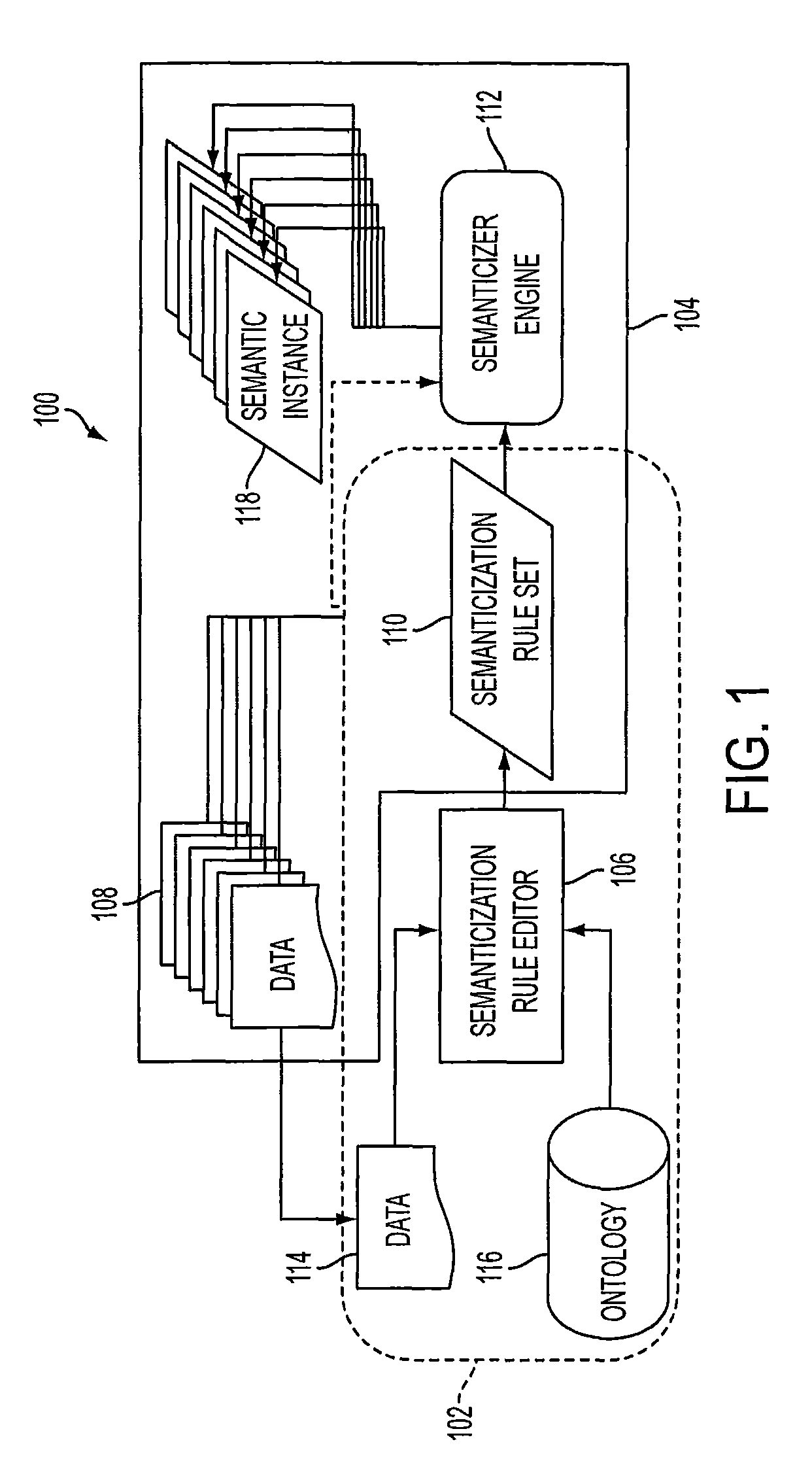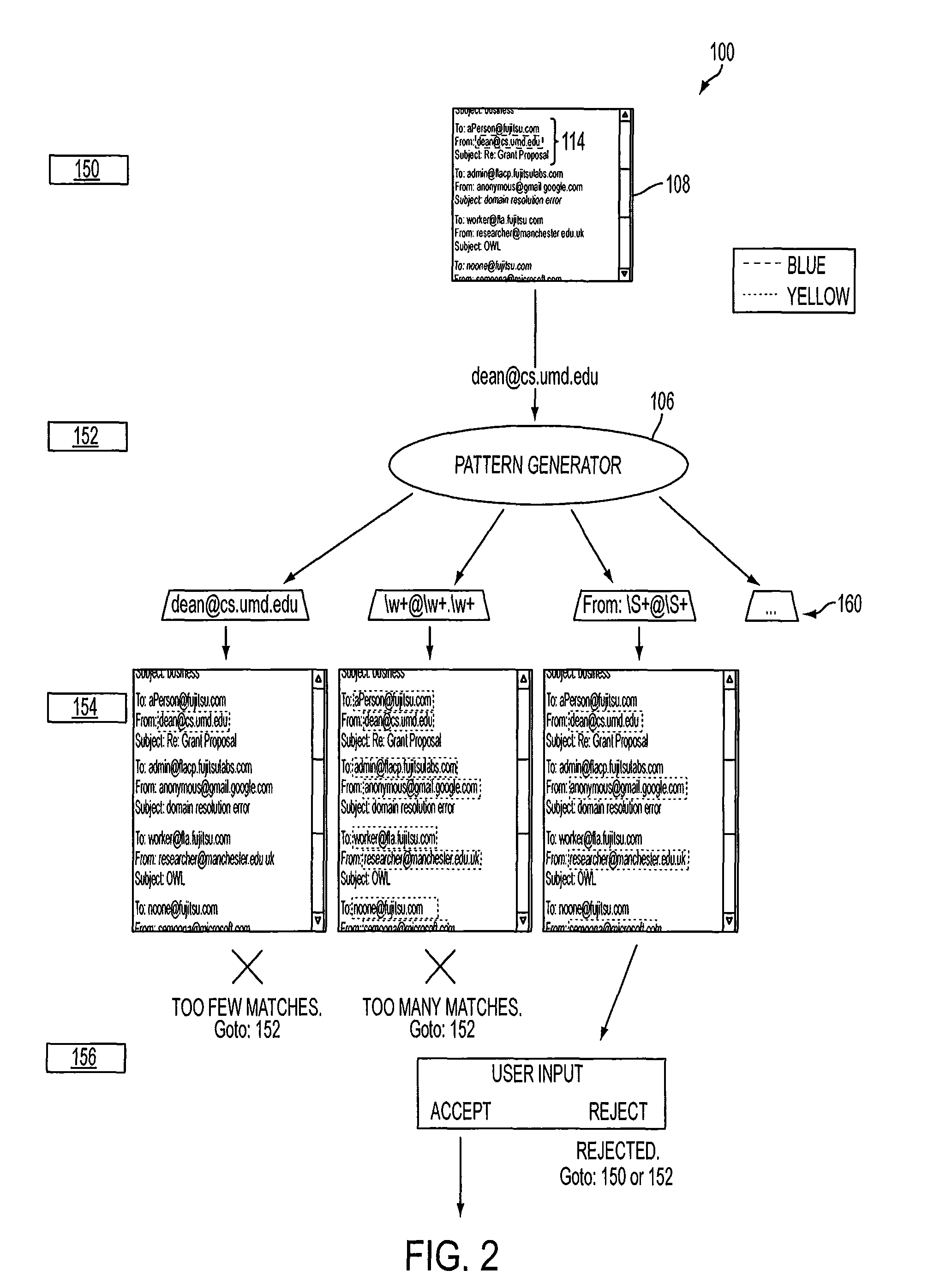Data semanticizer
a data semanticizer and data technology, applied in the field of methods and computer systems, can solve problems such as input data based, tedious and error-prone data annotation approaches, and data annotation approaches that are too tedious and error-prone to be applicable to large data
- Summary
- Abstract
- Description
- Claims
- Application Information
AI Technical Summary
Benefits of technology
Problems solved by technology
Method used
Image
Examples
Embodiment Construction
[0021]Reference will now be made in detail to the present embodiments of the present invention, examples of which are illustrated in the accompanying drawings. The embodiments are described below to explain the present invention by referring to the figures.
[0022]FIG. 1 is a flow chart of semanticizing data, according to an embodiment of the present invention. The present invention provides a computer system, as a data semanticizer 100, to assist a user to annotate with semantics a large volume of electronic data 108, in any format, including semi-structured to unstructured electronic data, in any domain. The data semanticizer 100 annotates data 108, in any format, in any domain, with semantics using intuitive and efficient methods so that the data set can be entered into their knowledge base (knowledge base being a collection of facts and rules needed for solving problems).
[0023]For example, the data semanticizer 100 can be applied to structured data. As another example, the data se...
PUM
 Login to View More
Login to View More Abstract
Description
Claims
Application Information
 Login to View More
Login to View More - R&D
- Intellectual Property
- Life Sciences
- Materials
- Tech Scout
- Unparalleled Data Quality
- Higher Quality Content
- 60% Fewer Hallucinations
Browse by: Latest US Patents, China's latest patents, Technical Efficacy Thesaurus, Application Domain, Technology Topic, Popular Technical Reports.
© 2025 PatSnap. All rights reserved.Legal|Privacy policy|Modern Slavery Act Transparency Statement|Sitemap|About US| Contact US: help@patsnap.com



